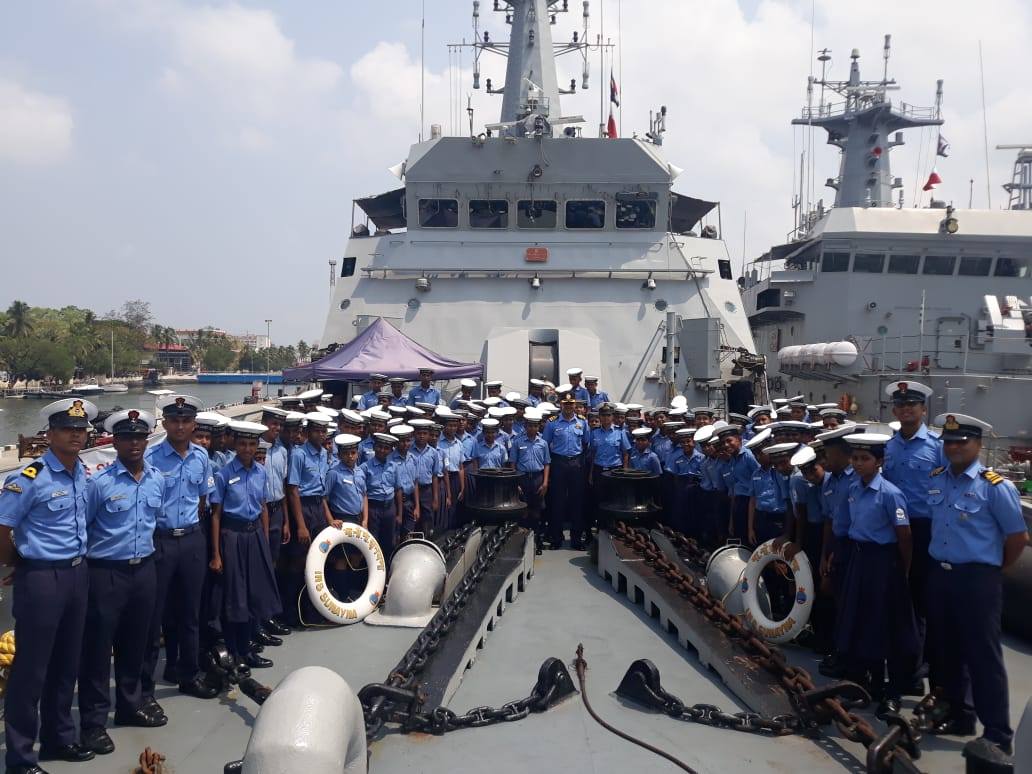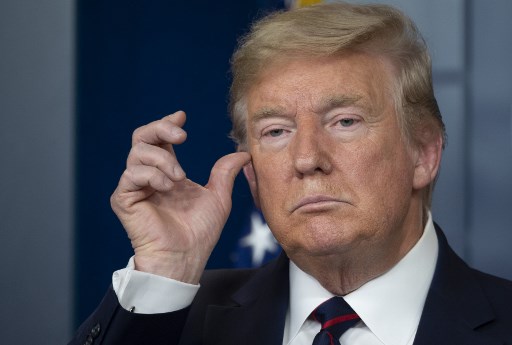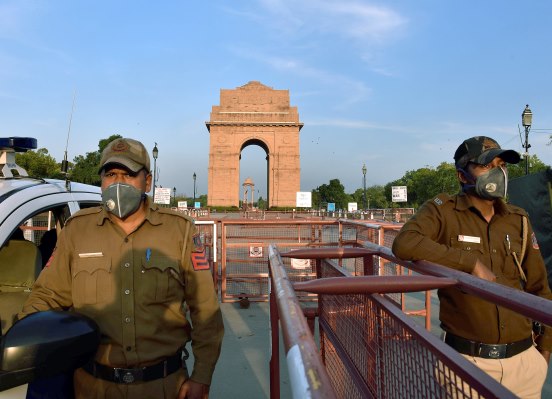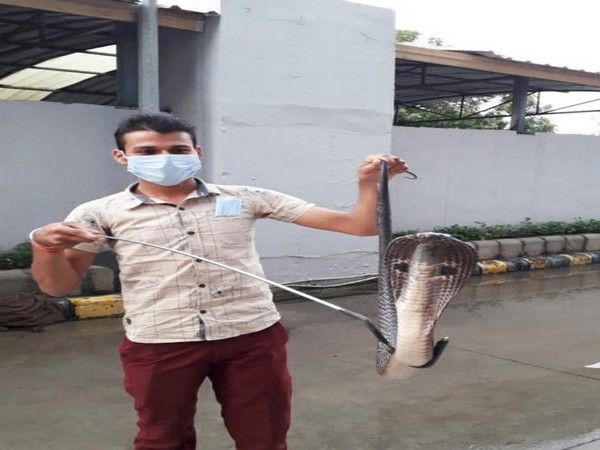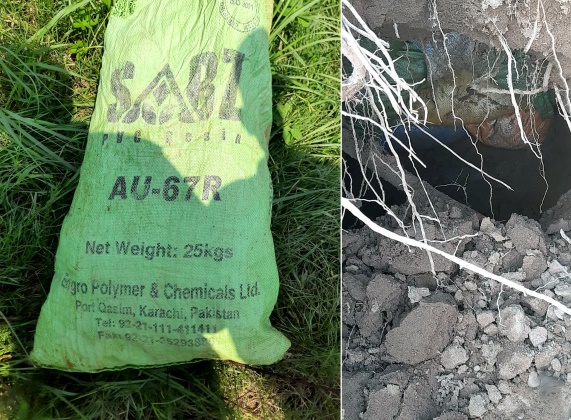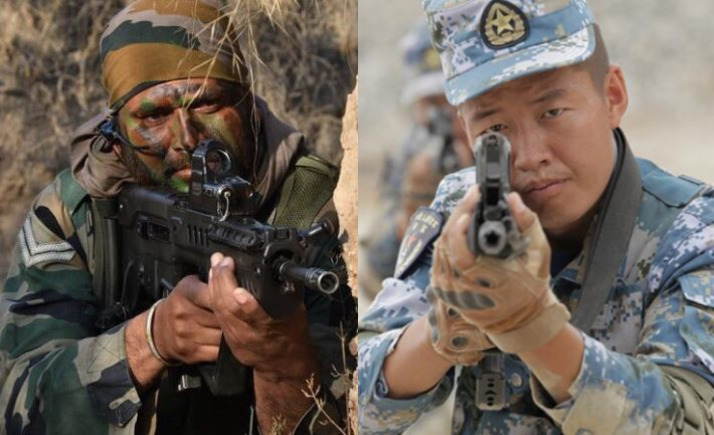At the southern tip of Mumbai, a ship,
unconventionally built with cement and concrete, sits lonely, wafted by the
Arabian Sea waves, anxiously awaiting its officers and cadets kept away by the
Coronavirus pandemic.
Named after India’s first prime minister who had
laid its keel in 1963, Training Ship Jawahar, as the name indicates, currently trains
2,300 of young boys and girls in seamanship – rowing, kayaking, canoeing and sailing
– in naval affairs and rigours of being on the sea. But more than that, it inculcates
discipline and prepares them for their future lives as caring, productive
citizens.
Not everyone joins the military service or one of
the many merchant navy companies. That many trained by Sea Cadet Corps (SCC) do
get attracted to wearing uniform and have done well in these professions is,
not a rule, but a natural corollary.
The ten-year-olds and teens from all sections of
society first make a Promise to wear their uniforms smartly and bring pride to
it. Once the cadet spends own money on that uniform, training in above and many
more activities that are normally reserved for the rich anywhere else, come for
just Rupees 400 annually. No fees for the sense of adventure that comes with
it.
This culture of volunteering at the sea was initiated
82 years back in Karachi by a young entrepreneur, late Gokaldas Ahuja. It was
appreciated by the Royal Indian Navy and the city’s elite that helped the Sea
Scouts to build their landship at Chhina Creek. But that dream ended with the
Partition.
Ahuja and cadets met, symbolically, at the Gateway
of India in Mumbai, then Bombay, to revive the movement. The Indian Navy and
the citizenry embraced them.
Hard work, when hundreds became thousands of cadets
trained in several port towns — and Nehru’s blessings – helped build Jawahar
as the National Headquarters.
Commissioned on February 10, 1966 by then President
S. Radhankrishnan, Jawahar, now 54, besides Nehru’s name, carries a halo of its
own that is sustained by training imparted to over 40,000 cadets to date.
The SCC’s history is also the veritable history of
Bombay and other port cities in the decades that followed the Independence. Not
just the prime ministers, governors and chief ministers, but also top Services
brass, the business community and the social glitterati attend its Parades and the
March-past on Independence Day by its units in many cities.
Girl cadets enrolled as early as 1955. Besides Vishakhapatnam
(Vizag), Chennai, Goa and Kochi, SCC imparts training even in less-known Okha,
Daman, Paradeep and Porbandar. Besides the Indian Navy, logistic and training
support comes from the Indian Coast Guard, Army units and even a school in Ootacamund
(Ooty).
Sea Cadet Corps is India’s only auxiliary body
which is authorized to fly a Blue Ensign. To enable this, Parliament amended
the Merchant Shipping Act.
Long years have seen generations of cadets, coached
by volunteer-officers, some of whom have returned to Jawahar on retirement
after completing their careers. Cadets have excelled in martial music and
tattoo, while participating in regattas and water-sports events in the Olympics
and the Commonwealth Games.
The Corps has participated in global events and
hosted some as part of an international movement of Sea Cadets and
International Sea Cadets’ Association (ISCA) forging fraternal ties with 120,000
cadets in 18 countries that stretch from Canada to Hong Kong and Sweden to
Britain.
This Indian movement received recognition from the
British royalty in the early days. Its Parades were inspected by Queen
Elizabeth II (in 1961) Prince Philip (1959) and Prince Charles (198O), besides
Lord Louis Mountbatten (1964).
Its Sail Training Ship Varuna became a model for a
float at the Republic Day parade in 1982. And in 1987, Varuna represented India
at the Bi-Centennial celebrations marking the founding of Australia.
After Nehru’s invitation, followed up by succeeding
prime ministers SCC contingents participated in the Republic Day Parades till
1986, marching on New Delhi’s Rajpath. I was lucky to participate twice.
Why do I talk about Sea Cadet Corps? Only because I
trained with it? Or, because I was among those cadets that placed stones to
reclaim the sea where Jawahar stands, and witnessed its rise — a huge
super-structure, ship-like gangways, the Captain’s Cabin and portholes for
windows?
See a larger picture before dismissing it as a
weekend pursuit for the young. Some of the cadets who went on to join the armed
forces were martyred during the conflicts in 1965 and 1971. Lt. Suresh Hiranand
Kundamal went down with INS Khukri in 1971 and Major Vetri Nathan died in
Kargil sector in 1971. Indeed, the road leading to Jawahar is named after
Nathan and the one approaching the Gateway of India, after Flying Officer Prem
Ramchandani who died during the 1965 conflict.
Air Marshal Adi Rustomji Ghandhi was awarded Vir Chakra
in 1965. Flt lt. Cherry Raney led a strike mission over Hussainiwala in 1971
and destroyed an enemy tank.
Take a still larger picture. Besides the National
Cadet Corps (NCC)’s Naval Wing, there certainly are sailing clubs along the
Indian shores. But none imparts all-round seamanship training to volunteer, by
volunteers, as the Sea Cadet Corps does.
Truth be told, there is little focus on the sea –
water in general—in India. View this in the context the fact that only a fourth
of our world is land, but also that India has a vast coastline that juts into
the Arabian Sea and the Bay of Bengal.
India also straddles the Indian Ocean. I have often
used this well-known fact while arguing to emphasize India’s importance as a
seafaring nation with a cheeky question: “Sir, tell me another nation that has
an ocean named after it?”
And yet, awareness of the sea is woefully poor in
India’s security culture since the invader always came from its northwest. When
the ‘enemy’ did come by the sea, as trader, India was colonized for over two
centuries.
The Indian Navy remains small considering the
nation’s maritime interests and its strategic reach on the high seas stretching
from the Gulf of Hormuz to the Malacca Strait. It also remains the ‘silent’
Service, not supposed to seek ships and weapons. At least, not boast about it.
Once when I wrote about higher budgetary allocations for the Navy, the Western Naval
Command Chief pleaded with my editor to ask me to pipe down!
Take the current talk of India having to prepare to
fight on two fronts in its north, without jeopardizing security at the sea. Can
this be achieved, in short, medium or long term without creating general awareness
and without dedicated and disciplined youth that must be trained, at least in
the basics?
Or take the talk of PPP – public-private
participation – in making the country self-sufficient in national defence.
Shouldn’t the PPP concept be extended to and experimented with an auxiliary body
like the Sea Cadet Corps? Its motto,
incidentally, is: “Ready Aye Ready.”
The writer can be reached at mahendraved07@gmail.com


